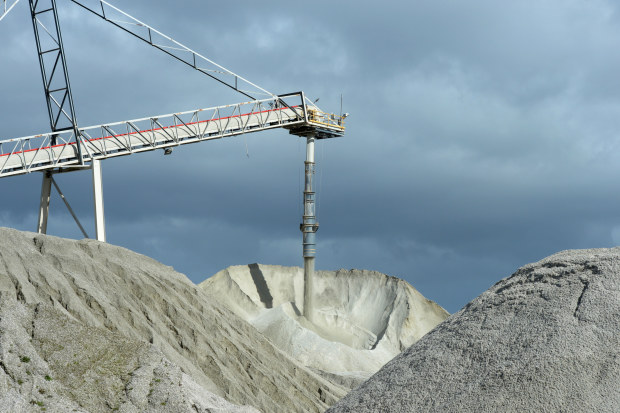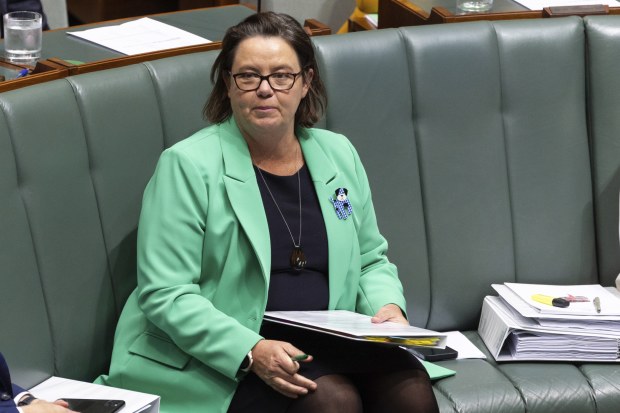This could prove to be an interesting development…
AFR - Australia racing to become global critical minerals superpowerMark LudlowQueensland bureau chiefJun 20, 2023 – 5.00amThe Albanese government will commit a further $500 million from the Northern Australia Infrastructure Facility (NAIF) to help kickstart a critical minerals processing industry which it claims could create $133.5 billion in new economic activity and 262,600 new jobs by 2040.
As countries rush to boost energy security and lessen their reliance on China for key minerals, such as lithium, the federal government has also announced it will conduct a review of the Australia’s critical minerals list by 2026.
As countries scramble to secure critical minerals like lithium (pictured), Australian may also want to take on the role of refiner. Bloomberg
The long-awaited strategy to be released by Resources and Northern Australia Minister Madeleine King on Tuesday is hoping to give a leg-up to downstream processing and manufacturing of critical minerals in Australia which are used in batteries, electric vehicles, wind turbines and solar panels.
But the race is on with other countries, as the federal government has set the ambition for Australia to be a globally significant producer of raw and processed critical minerals and build sovereign capability in critical minerals processing by 2030.
This is despite concerns that have been raised about whether Australia is too expensive to have its own processing facilities or battery factories.
ADVERTISEMENTCONTENT RESUMES ON SCROLLAdvertisementThe $500 million from NAIF is expected to be the first major investment in the sector from the federal government, which already has the $2 billion Critical Minerals Facility administered by Export Finance Australia.
Although the word “China” is not mentioned once in the 55-page document, the report said it would monitor foreign investment in Australian critical minerals projects “to ensure it is not counter to Australia’s national interest”.
Ms King said there were many challenges for Australia in the global race to get the raw materials for key products used in defence, space, energy and transport industries.
The report found demand for battery minerals, such as lithium, is expected to increase by 40 times between 2020 and 2040, while demand for cobalt and graphite could increase by about 20 times.
Australia is the box seat because it currently has some of the biggest undeveloped sources of critical minerals including cobalt, lithium, manganese, rare earth elements, tungsten and vanadium.
But the federal government has warned some Australian processors and manufacturers may struggle to get access to mineral supplies in the future because most are exported overseas
Advertisement“The new critical minerals strategy outlines the enormous opportunity to develop the sector and new downstream industries which will support Australia’s economy and global efforts to lower emissions for decades to come,” Ms King said.
“While the potential is great, so too are the challenges. The strategy makes it clear our natural minerals endowment provides a foot in the door, but we must do more to create Australian jobs and capitalise on this unique opportunity.”
Ms King said they would ringfence $500 million from the next $2 billion tranche of funding going into the NAIF which was set up by the former Coalition government to fund projects in the northern states.
There is $1.1 billion left from the original $5 billion committed to NAIF, with a bill before parliament this week to tip another $2 billion to take the total available to $3.1 billion.
It is understood there will be no restrictions on the $500 million investment from NAIF as long as it is consistent with the federal government’s critical minerals strategy.
The new strategy is also looking into moving into downstream processing of minerals – a key theme of last month’s Australian Financial Review Mining Summit in Perth.
AdvertisementAnother key plank of the strategy is to encourage international investment in downstream processing and manufacturing sectors.
Federal Resources Minister Madeleine King says the race is on to develop critical mineral industries. Alex Ellinghausen
The Albanese government said it would analyse the type and volumes of minerals that emerging downstream processing and manufacturing sectors would need.
As part of the release of the critical minerals strategy, the federal government will also commit to a review of Australia’s list of 26 critical minerals – mirroring other countries that have used the list to bolster their energy security and to lessen their reliance for key products, such as lithium, from China.
There has been a push from industry for nickel, zinc and tin to be included in Australia’s new critical minerals list.
It is understood there is also the possibility a secondary list might be created that relate specifically to elements needed for net zero.
- Forums
- ASX - By Stock
- General Discussion
This could prove to be an interesting development… AFR -...
-
- There are more pages in this discussion • 1,423 more messages in this thread...
You’re viewing a single post only. To view the entire thread just sign in or Join Now (FREE)
Featured News
Add ARU (ASX) to my watchlist
 (20min delay) (20min delay)
|
|||||
|
Last
19.3¢ |
Change
0.003(1.32%) |
Mkt cap ! $450.5M | |||
| Open | High | Low | Value | Volume |
| 19.5¢ | 20.0¢ | 19.0¢ | $1.582M | 8.146M |
Buyers (Bids)
| No. | Vol. | Price($) |
|---|---|---|
| 20 | 1812632 | 19.0¢ |
Sellers (Offers)
| Price($) | Vol. | No. |
|---|---|---|
| 19.5¢ | 863344 | 43 |
View Market Depth
| No. | Vol. | Price($) |
|---|---|---|
| 20 | 1812632 | 0.190 |
| 21 | 1860987 | 0.185 |
| 76 | 2772411 | 0.180 |
| 45 | 2535230 | 0.175 |
| 38 | 4194511 | 0.170 |
| Price($) | Vol. | No. |
|---|---|---|
| 0.195 | 854739 | 42 |
| 0.200 | 1969019 | 47 |
| 0.205 | 1484527 | 26 |
| 0.210 | 1479968 | 27 |
| 0.215 | 562332 | 15 |
| Last trade - 15.21pm 23/07/2024 (20 minute delay) ? |
Featured News
| ARU (ASX) Chart |
The Watchlist
I88
INFINI RESOURCES LIMITED
Charles Armstrong, CEO & MD
Charles Armstrong
CEO & MD
Previous Video
Next Video
SPONSORED BY The Market Online







